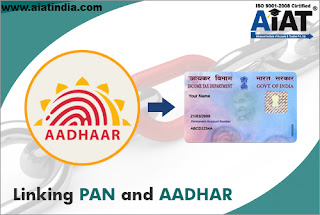For most employees House Rent
Allowance (HRA) is a part of their profits structure. Even though it is part of
your profits, HRA, unlike primary income, isn't completely taxable. Subject to
certain situations, a part of HRA is exempted under phase 10 (13A) of the
Income-tax Act, 1961.
The amount of HRA exemption is
deductible from the full profits before arriving at a taxable earnings. This
helps an employee to save tax. However do remember that the HRA obtained out of
your organization, is completely taxable if an employee is living in his
personal residence if he does not pay any rent.
Who can avail HRA?
The tax gain is to be had only to
the salaried those who has the HRA thing as a part of his profits structure and
is staying in a rented lodging. Self-employed experts cannot avail the
deduction.
How a lot is exempted?
The exemption for HRA benefit is the
minimum of:
i) Real HRA acquired
ii) 50% of earnings if residing in
metro towns, or 40% for non-metro cities; and
iii) extra of lease paid annually
over 10% of annual income
For calculation purpose, the salary
considered is 'basic salary'. In case 'Dearness Allowance (DA)' (if it forms a
part of retirement benefits) and 'commission received on the basis of sales
turnover' is applicable, they too are added to compute the minimum HRA
exemption available.
The tax benefit is to be had to the
individual handiest for the period wherein the rented house is occupied.
Example of HRA calculation
Let's consider an man or woman,
with a month-to-month simple revenue of Rs 15,000, gets HRA of Rs 7,000 and can
pay Rs 8,400 hire for an lodging in a metro city. The tax rate relevant to the
character is 20 percent of his income.
To avail HRA advantage, the least
of the subsequent quantity (yearly) is exempted, rest is taxable:
i) actual HRA acquired =
84,000
ii) 50% of earnings (metro
city) = Rs 90,000 (50% of Rs 1,80,000)
iii) excess of hire paid
yearly over 10% of annual profits = Rs 82,800 (Rs 1,00,800 - (10% of Rs
1,80,000))
It indicates that of Rs 84,000
certainly received as HRA, Rs 82,800 gets tax exemption and best the stability
of Rs 1,200 gets delivered to the employee's earnings, on which a tax of Rs 240
( 20 per cent slab ) receives payable.
HRA exemptions can be availed only
on submission of rent receipts or the hire agreement with the house proprietor.
it's miles mandatory for the employee to document the Pan Card of the
'landlord' to the agency if the hire paid is greater than Rs 1,00,000 yearly.
Special cases
There might be special scenarios in
claiming HRA tax advantage, along with:
1. Paying rent to own family individuals
The rented premises need to no
longer be owned by the person claiming the tax exemption. So in case you stay
along with your dad and mom and pay lease to them then you may declare that for
tax deductions as HRA. but, you can't pay rent in your spouse. As, in the view
of the relationship, you are presupposed to take the accommodation
collectively. accordingly, these transactions can invite the scrutiny from the
earnings -tax branch.
Even if you are renting the
residence out of your mother and father, make certain you have got documentary
proof as evidence that economic transactions regarding your tenancy takes area
between you and your figure. So preserve a record of banking transactions and
lease receipts due to the fact your claim can get rejected by way of the tax
branch if they may be not satisfied by using the authenticity of the
transactions. lately, there was an instance in which the HRA declare of a
salaried taxpayer became rejected by way of the Mumbai profits tax appellate
tribunal because the claim for HRA did not seem authentic to the tax officials.
2. Own a house, but staying in a exceptional city
possible avail the simultaneous
gain of deduction to be had for the home loan against 'interest paid' and
'principal repayment' and HRA in case your home is rented out or you work in
another city.
folks that do not get HRA but pay
rent
There may be some employees who may
not have HRA thing of their earnings structure. also, a non-salaried character
is probably paying hire. For them, segment eighty (GG) of the earnings-tax Act
gives help.
An character paying lease for a
furnished/unfurnished accommodation can claim the deduction for the hire paid
below segment eighty (GG) of the I-T Act, supplied he isn't paid HRA as a part
of his income through furnishing shape 10B.
How Much
The least of the subsequent is to
be had for exemption from tax under section 80GG:
(i) hire paid in extra of 10% of
overall profits
(ii) 25% of the total of the
overall income*
(iii) Rs five,000 in line with
month
below this section, the overall income
is calculated as gross general earnings minus long-term capital gains, the
quick-term capital where Securities Transaction Tax (STT) has been paid and
deductions to be had beneath Sections 80C to 80U, except segment 80GG.
conditions
while claiming a tax deduction, one
should understand that the person himself or his/her spouse, or minor child, or
as a member of the Hindu Undivided circle of relatives (HUF) ought to now not
personal any accommodation. additionally, if the individual owns any residential
assets at any area and earns rent from it then no deduction is allowed.
you can actually avail the
simultaneous gain of deduction available for the home loan against 'interest
paid' and 'foremost reimbursement' and HRA in case your property is rented out
or you work in every other metropolis. but, the same isn't always available in
case of section 80GG.











